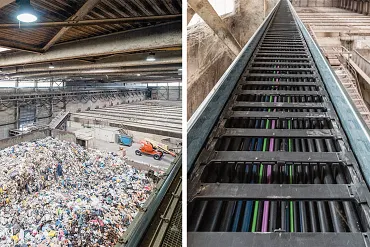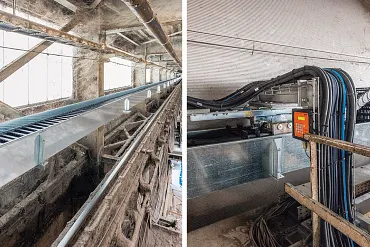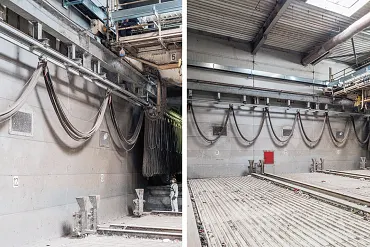Cambiar idioma :
La duradera cadena de plástico y energía sustituye con éxito a los festones en la grúa de residuos
Las cadenas portacables se utilizan en 116 metros de recorrido en el tratamiento de residuos.
En una empresa de eliminación de residuos de Bélgica, los cables de arrastre de dos grúas móviles se han sustituido por nuestra cadena portacables®. El proyecto presentaba varios retos: Las grúas tienen que recorrer distancias de 116 metros, su velocidad es de 2,5 metros por segundo con una aceleración de 0,5 metros por s². Ambas grúas utilizan la misma vía férrea, por lo que necesitan dos largas cadenas portacables®, que corren una encima de la otra en el mismo canal. Estas cargas tan diferentes sólo podían manejarse de forma inadecuada con cables de arrastre. Con las cadenas portacables, que se suministran completamente premontadas y listas para usar®, se podía reducir la longitud de los cables y aumentar considerablemente su vida útil.
En esta instalación de residuos, los carros de dos grúas recorren una longitud de 116 metros.

La cadena portacables® instalada hoy permite aumentar la seguridad y reducir los costes. Entre otras cosas, esto se ha conseguido gracias a un sistema de detección de empuje/tracción para medir la fuerza de tensión/empuje (mitad derecha de la imagen).

Los cables de arrastre utilizados anteriormente no sólo requerían mayores longitudes y diámetros de cable, sino que también eran más sensibles a las altas velocidades de desplazamiento.

TCS nv, Hakan Tiren, Houthalen-Helchteren, Bélgica
Aquí encontrará más aplicaciones interesantes de ámbitos muy diversos
Consultas
Estaré encantado de responder a sus preguntas personalmente

Consultas y envíos
En persona:
De lunes a viernes de 8:00 a 18:00h
Online:
24h

